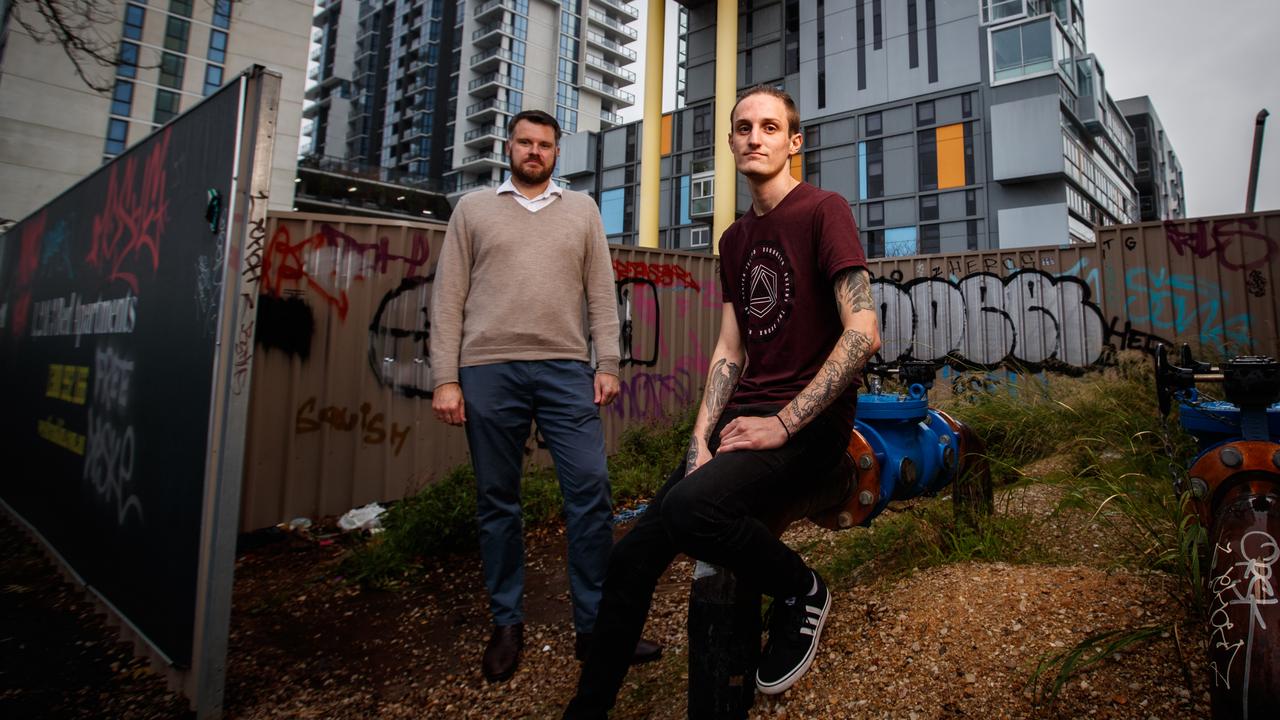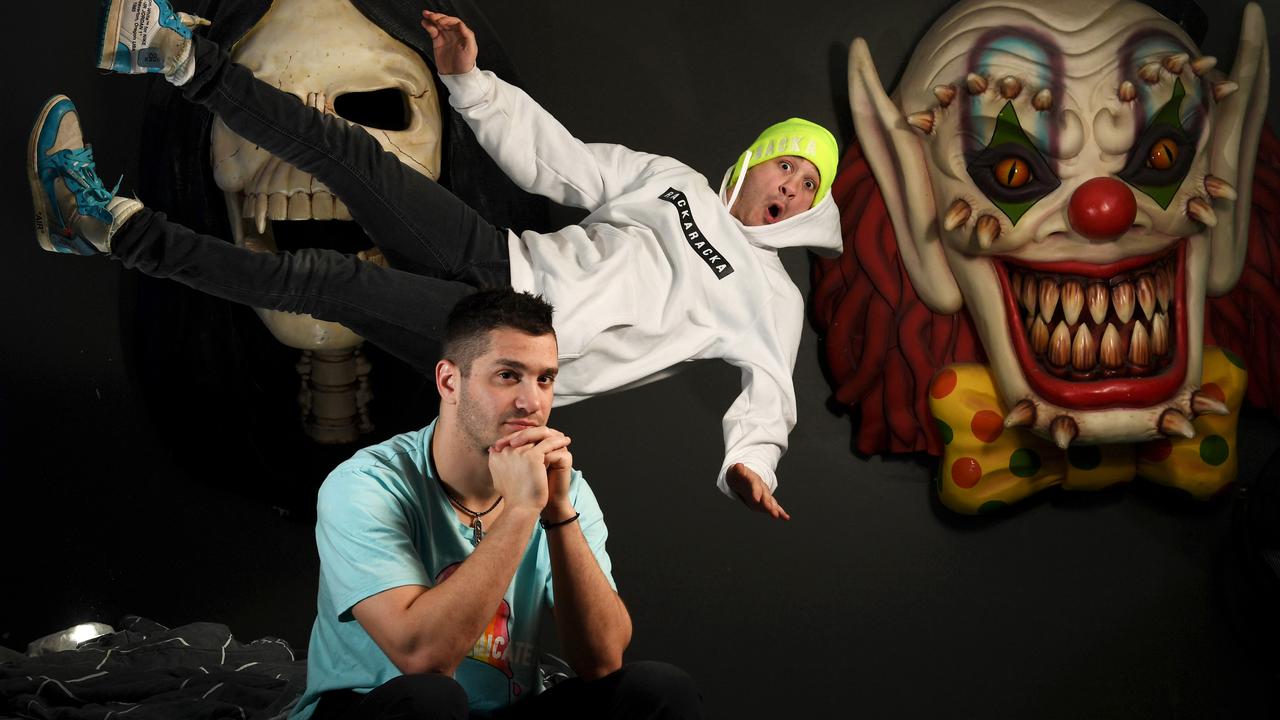What a visit to the barber’s used to be like
THE races on the radio, bets under the table, racy magazines — and lots of Brylcreem. A trip to the barber’s used to be very, very different.
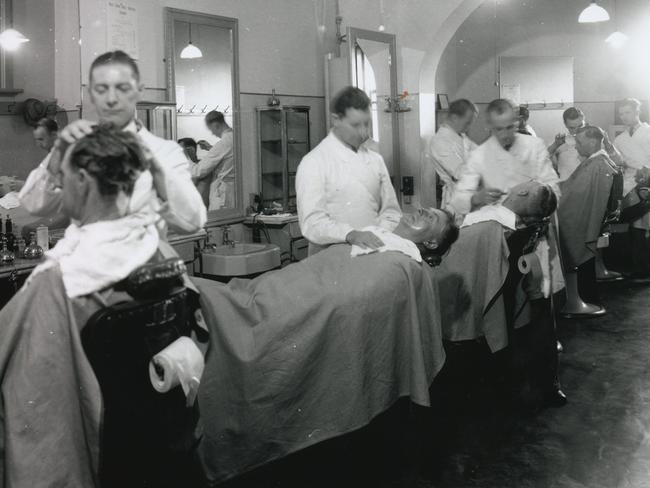
SA Weekend
Don't miss out on the headlines from SA Weekend. Followed categories will be added to My News.
- How hundreds used to catch the pokies express over the border
- Adelaide’s old butcher shops of the 1940s, 50s and 60s
- Growing up in the freedom of the 1950s
- How kids won their wild west
- Five of the best barber shops in Adelaide’s CBD
DO you remember the barber shops of old? Not the ones that did the bloodletting, hence the red-and-white-striped poles out the front.
They were a bit before my time, but the ones that always had the races going on the radio and the guy taking the bets in the back room?
I remember my mum taking me around to a block of shops on the Port Rd at Cheltenham and how embarrassing.
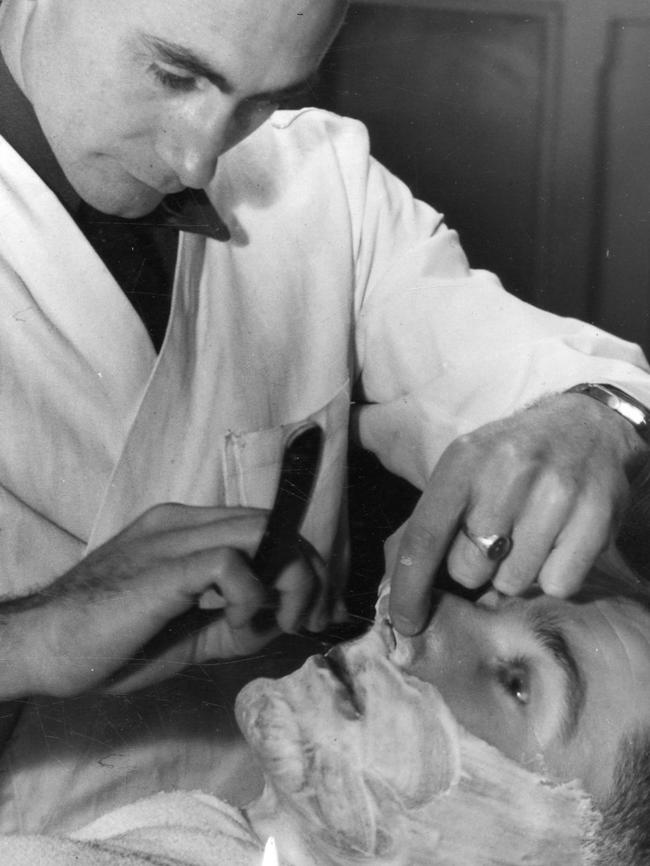
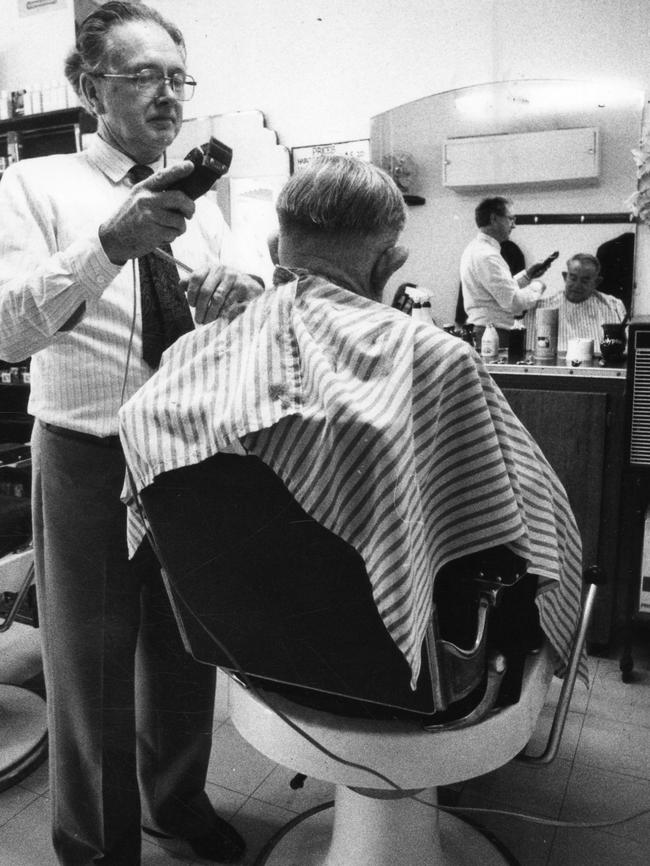
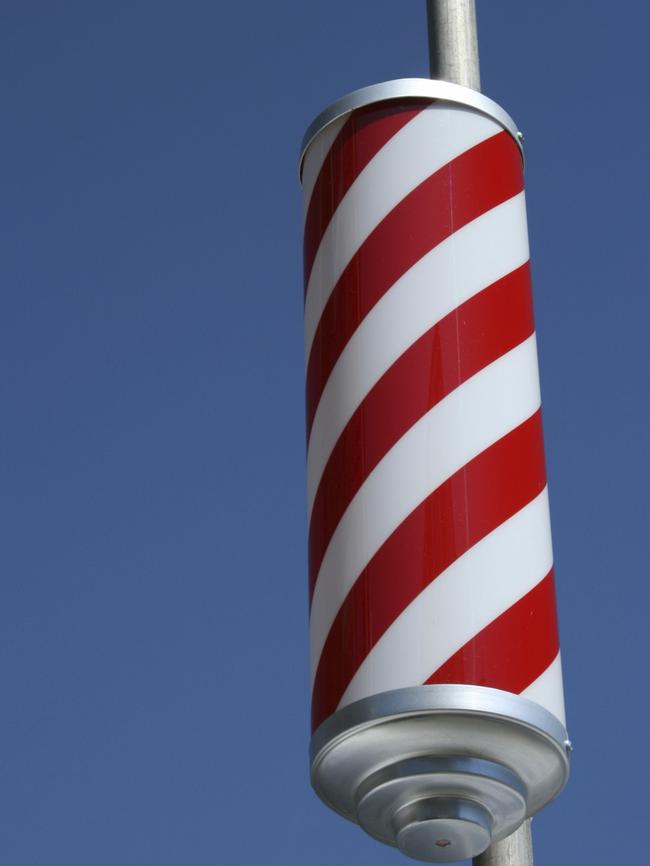
I was too small for the barber’s chair so he used to put a little padded plank across the arms of the chair to make me high enough while he snipped and I cried.
What a circus. If I’d known about the bloodletting history then it would have been a three-ring circus.
Let’s get rid of that now. For those who may not know, barbers were originally known as barber surgeons and one of their duties was to assist the public to get rid of an excess of blood and to lance boils.
In the 1300s, people thought too much blood in your system could give you fevers and headaches.
Blood-letting was beneath many doctors, who referred the work to “barbers”.
To advertise their services, they used to hang their bandages to dry on poles at the front of their establishments, hence the red-and-white-striped poles now used to advertise barber shops.
Those who do bloodletting these days don’t get a lot of repeat business.
I didn’t have fond memories of my early visits to the barber until my father began to take me to a mate of his who had a shop near the Cheltenham Racecourse.
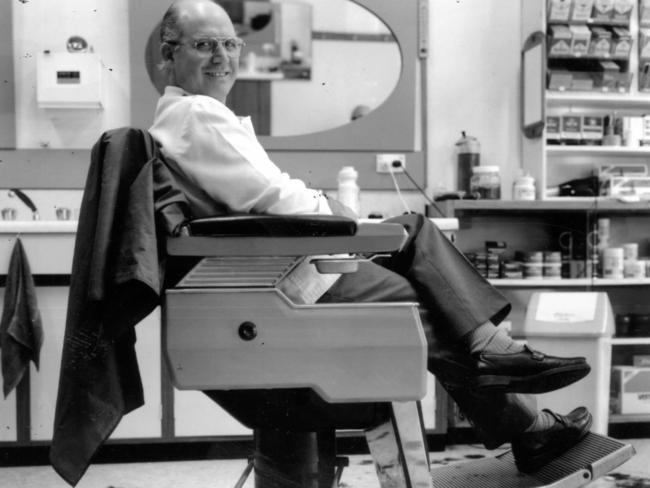
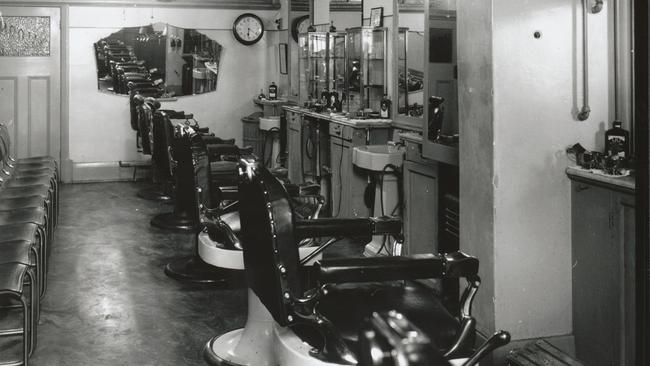
I was made to feel like a “big boy” and it felt a bit silly to cry.
We also did away with the padded plank.
But Dad’s mate sure took a lot of phone calls. The calls didn’t last long.
Just a few mumbled words and a few notes on a slip of paper and then he’d throw the paper in the rubbish bin.
Or what looked like a rubbish bin. I learnt long after it was about some sort of betting game he played.
The barbers’ shops were always decorated with cigarette advertising and near-naked ladies on calendars.
Every time a horse race ran, or a dog chased a stuffed rabbit, time seemed to stop in barber shops and the people getting haircuts either got happy or sad.
Back then, it was the continual snip, snip, snip of scissors and hand-operated clippers. They were kept in some sort of cabinet with ultraviolet light which was supposed to keep them clean.
Some actually dunked their cutters in a disinfectant solution. They seemed to sharpen and maintain their own equipment.
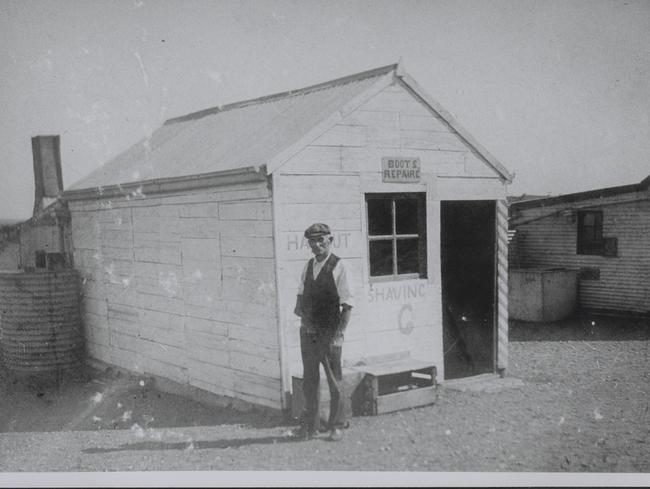
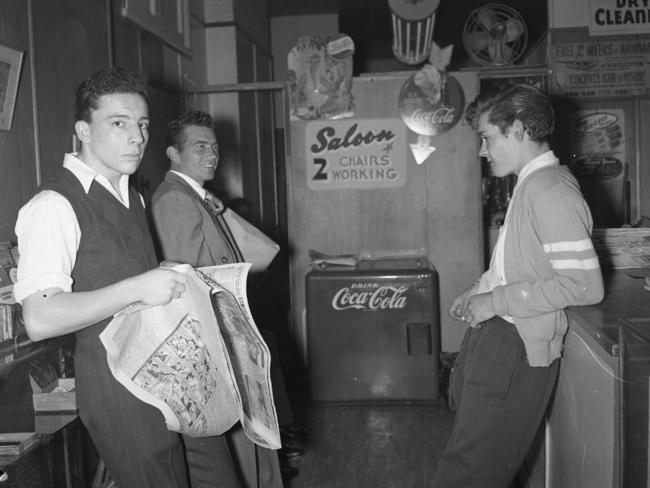
How about those barbers’ chairs? In American movies, you couldn’t get into a barber’s chair for criminals.
They always sat there with soap all over their faces, holding court and whispering who was “gonna get it” that day.
Those old chairs bring big money these days, so much so that they’re making “new” old chairs. The floor was always covered in piles of hair. I was told they stuffed teddy bears with it.
Depending on where they were located, barbers kept what seemed like a huge range of cigarettes, tobaccos and pipes.
Then there were all the things that went along with them like pipe cleaners and combs and little sticks that you rubbed on to stop bleeding if you cut yourself when you shaved.
I don’t remember seeing too many hair brushes. Real men didn’t use hair brushes.
However, they did use Brylcreem. A little dab would do you, and 1808 Brilliantine.
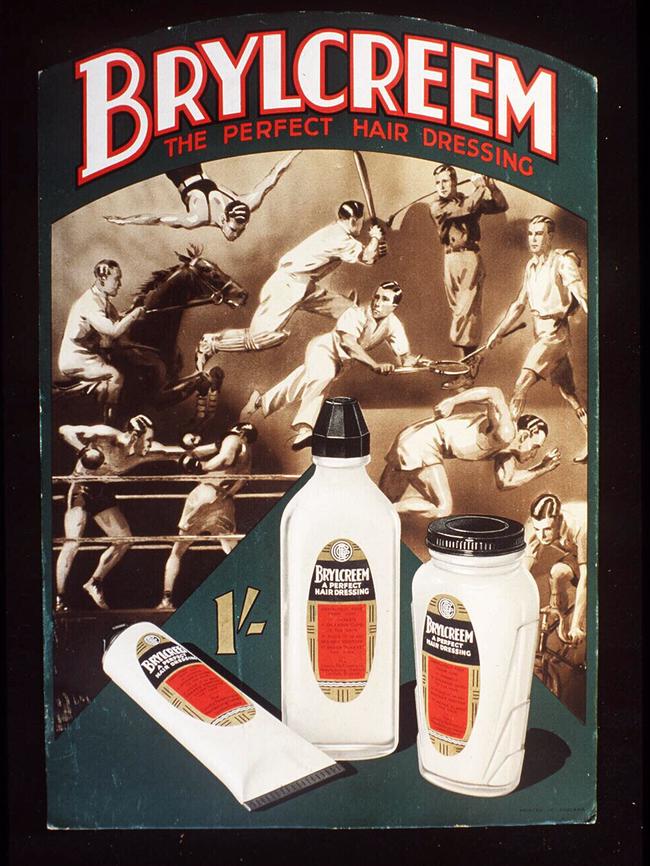
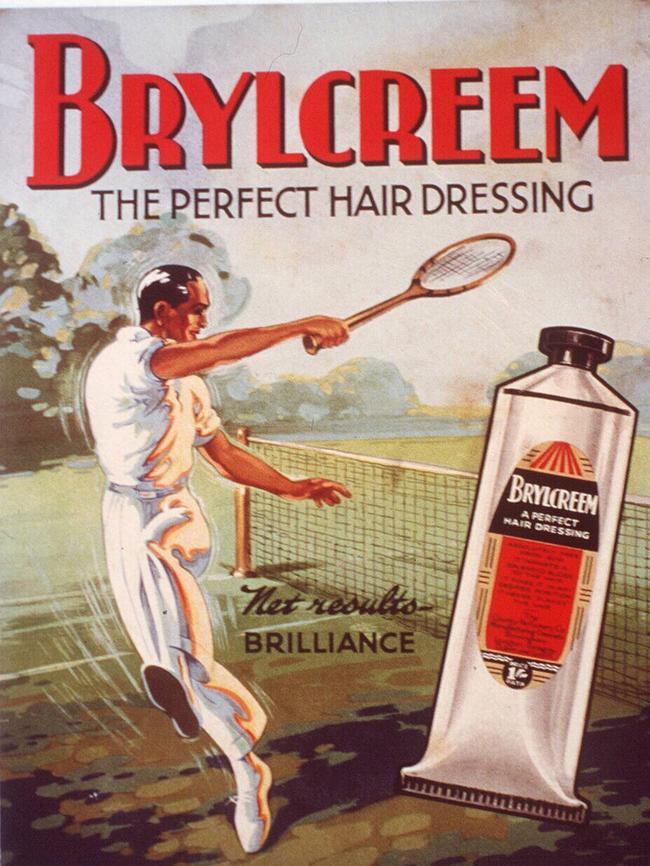
There was always plenty of that too. But Dad’s mate made his own version of the 1808 hair oil, which he mixed up out the back and we’d take it home by the beer bottle full.
I was always fascinated by the razor strops and the way the barber would seem to be inches from death as he slapped the cutthroat razors on the leather and then looked as though he was going to cut a throat or two.
How I wanted to have soap slopped all over my face, and then whisked off by anything but a cutthroat razor.
When I could finally go to the barber by myself, I got to read all the obligatory magazines like People, Post, Australasian Post and … Man and Man Junior!
Finally, I got to see what women looked like with no clothes on.
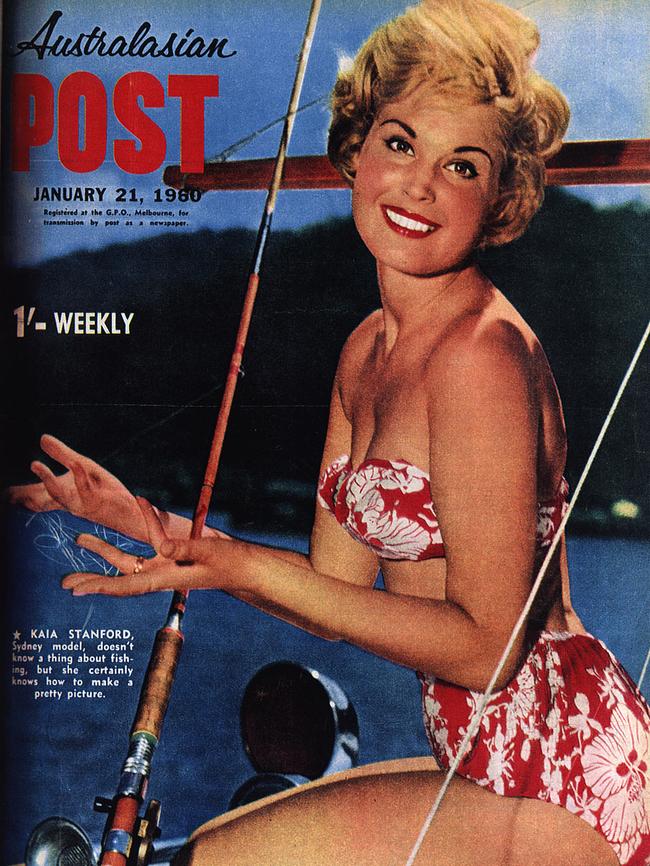
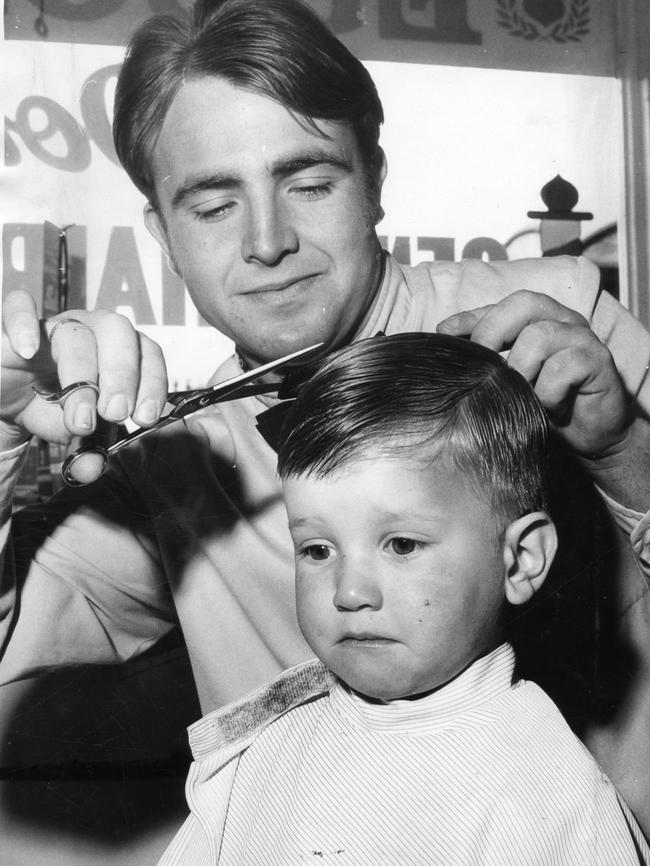
They had nothing — well, certainly not after the blotting and airbrushing. What a disappointment.
The good news is, barbers are making a comeback.
They need a bit of showmanship and my guy Arthur, at Hair by Joe, is a real character. He’ll try anything and he’s getting back to the old tradition of the street barber.
He has a fully portable operation which sees him popping up at markets and fairs all over the place at nights and on Sundays.
The final comment on barbers is this excerpt from Banjo Paterson:
The Man from Ironbark
The barber man was small and flash, as barbers mostly are/He wore a strike-your-fancy sash, he smoked a huge cigar/He was a humorist of note and keen at repartee, He laid the odds and kept a “tote”, whatever that may be/And when he saw our friend arrive, he whispered, “Here’s a lark!/Just watch me catch him all alive, this man from Ironbark.”
There were some gilded youths that sat along the barber’s wall./Their eyes were dull, their heads were flat, they had no brains at all;/To them the barber passed the wink, his dexter eyelid shut/“I’ll make this bloomin’ yokel think his bloomin’ throat is cut.”/And as he soaped and rubbed it in he made a rude remark:/“I s’pose the flats is pretty green up there in Ironbark.”
A grunt was all reply he got; he shaved the bushman’s chin/Then made the water boiling hot and dipped the razor in./ He raised his hand, his brow grew black, he paused awhile to gloat,/ Then slashed the red-hot razor-back across his victim’s throat: /Upon the newly shaven skin it made a livid mark /No doubt it fairly took him in — the man from Ironbark.
This was the final Boomer column on the history of South Australian culture and life by Bob Perry before his death in September

